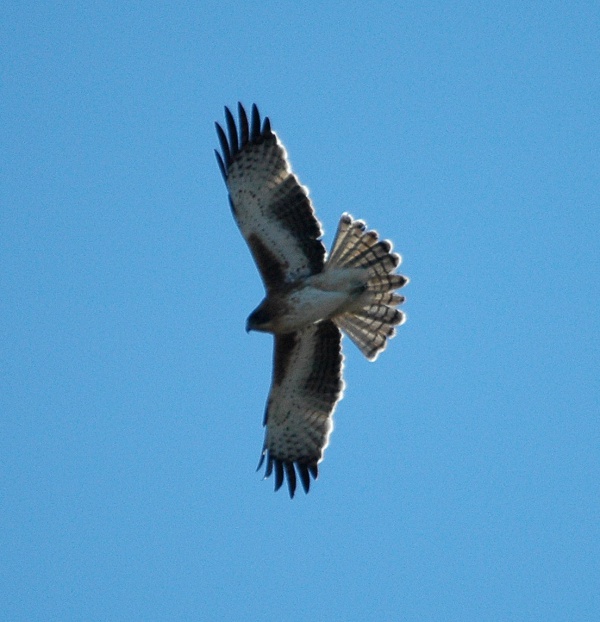Facts About Little eagle
The little eagle, a native bird of Australia, is a fascinating species that measures between 45 to 55 centimeters in length and weighs approximately 815 grams. These birds prefer open woodlands, grasslands, and arid regions, avoiding dense forests.
Notably, the little eagle is genetically distinct and has been recognized as a separate species, rather than merely a subspecies. They exhibit a small, stocky build, a broad head, fully feathered legs, and a barred tail. These birds can be found in both light and dark color morphs, which may change as they age.
Unfortunately, the little eagle is experiencing a population decline. Habitat loss and competition from other species pose significant threats. Historically, they relied heavily on rabbits for food, but the rabbit population has dwindled due to the release of the calicivirus, thereby impacting the little eagle's numbers. Once commonly found across various regions, their population has significantly decreased over time. They prefer habitats that offer a mix of wooded and open spaces but avoid dense forests.
From a conservation perspective, the little eagle is listed as 'Vulnerable' in the Australian Capital Territory and New South Wales, primarily due to habitat degradation and a reduction in genetic diversity. However, the IUCN Red List still categorizes them as 'Least Concern' because of their extensive range and a population decline rate that is below the threshold for more severe conservation concern.
Regarding their lifestyle, little eagles typically nest in open woodlands and lay one or two eggs per season. They are territorial about their nesting areas and hunt live prey. With the decline in rabbit populations, their diet has had to adapt. They also face threats from habitat destruction and competition with larger birds such as the wedge-tailed eagle.
